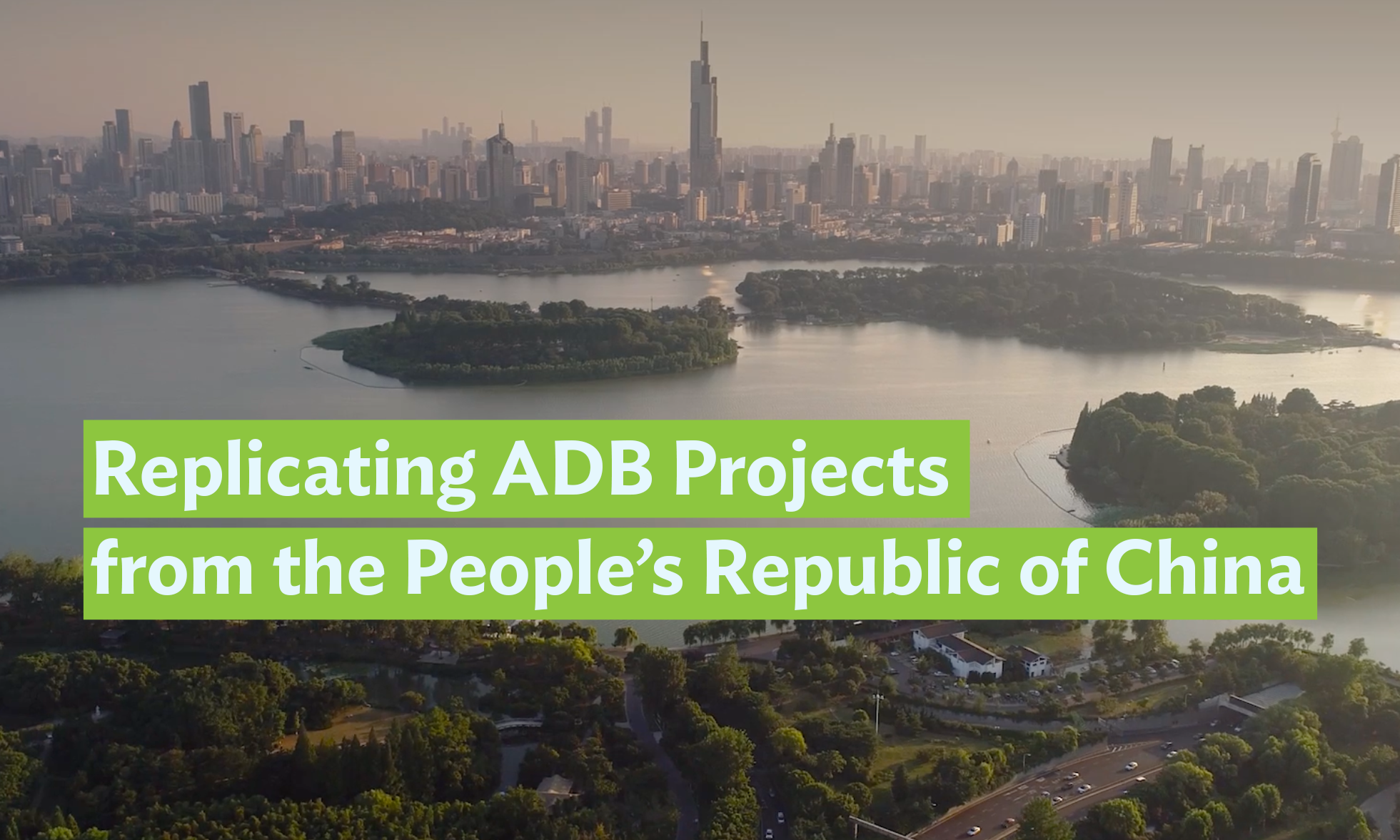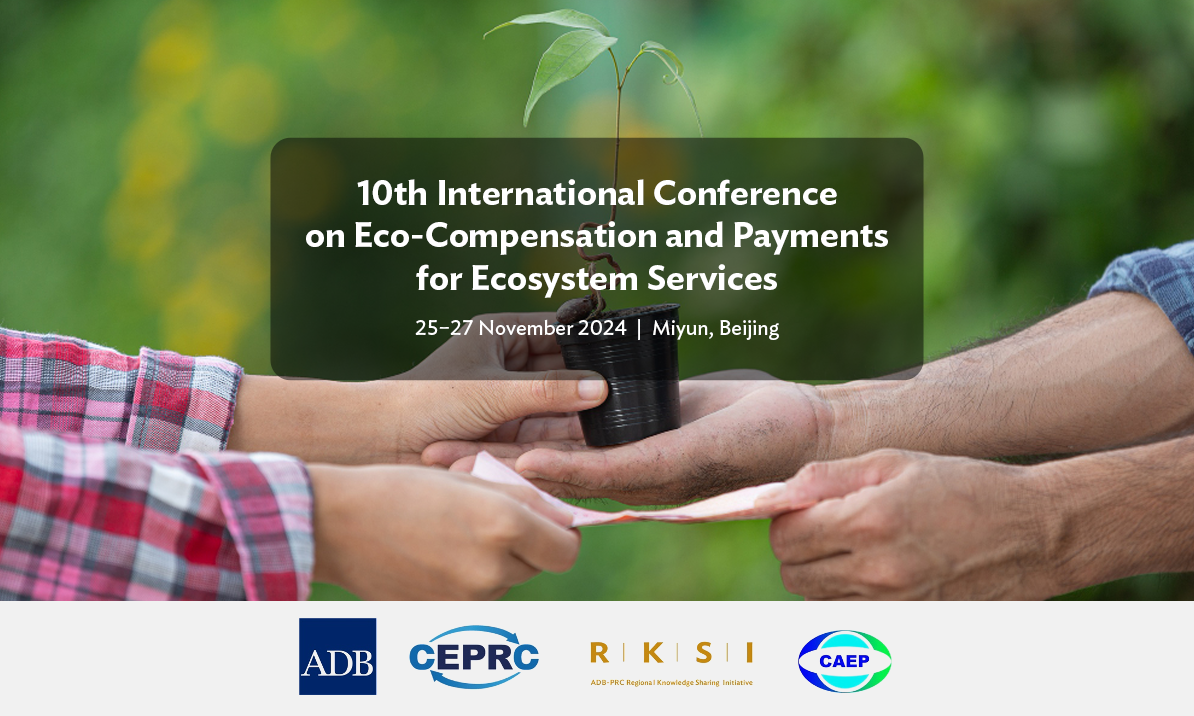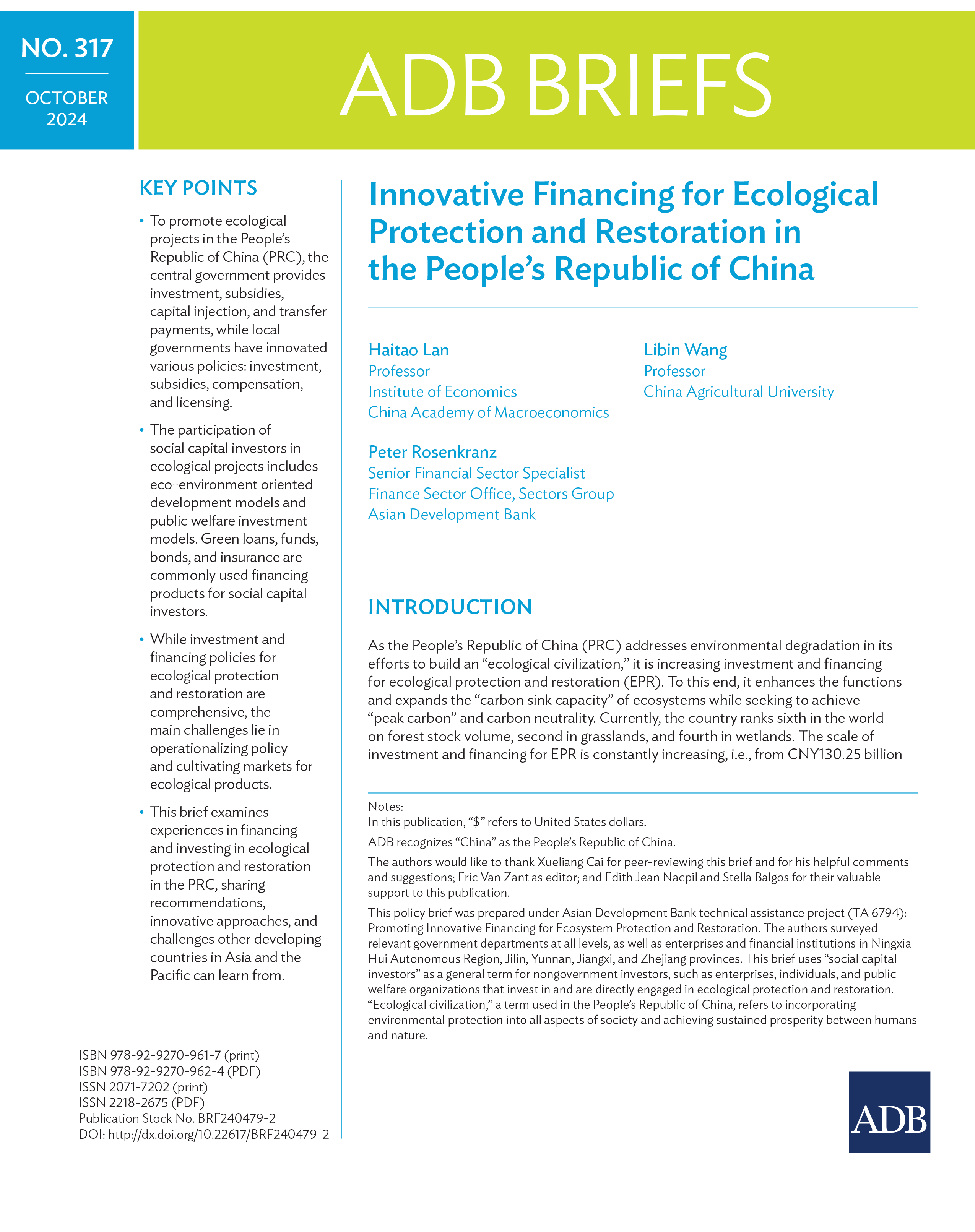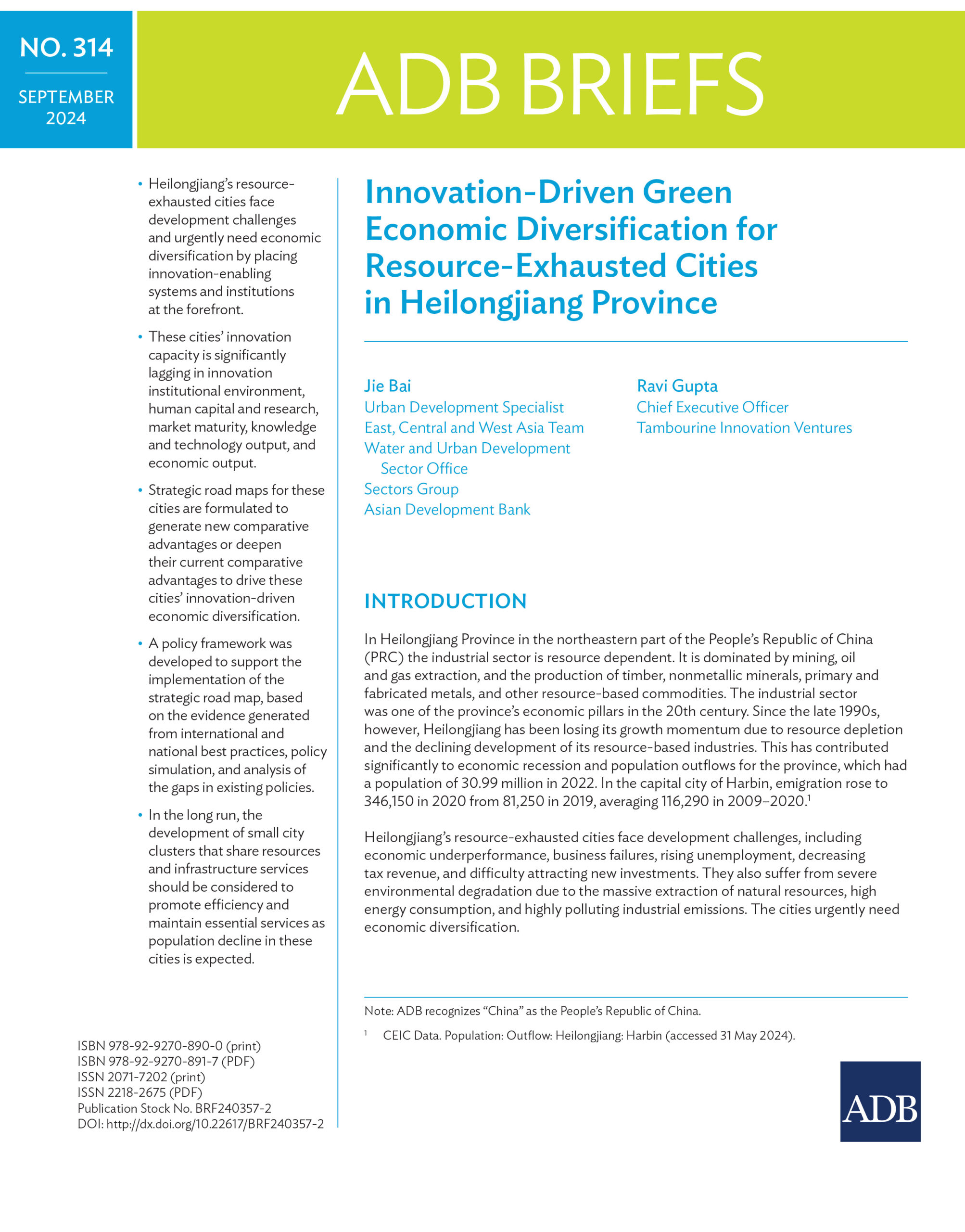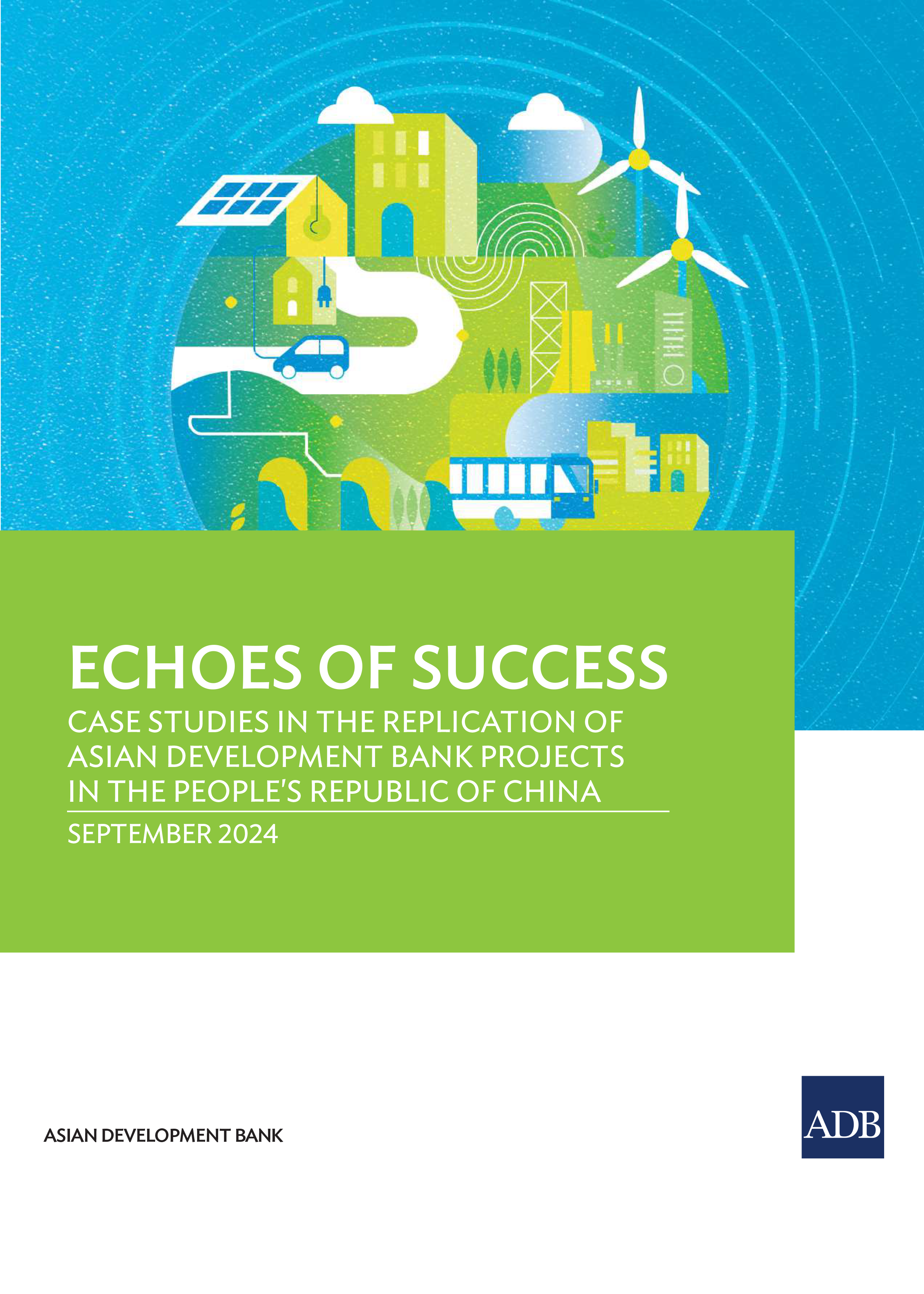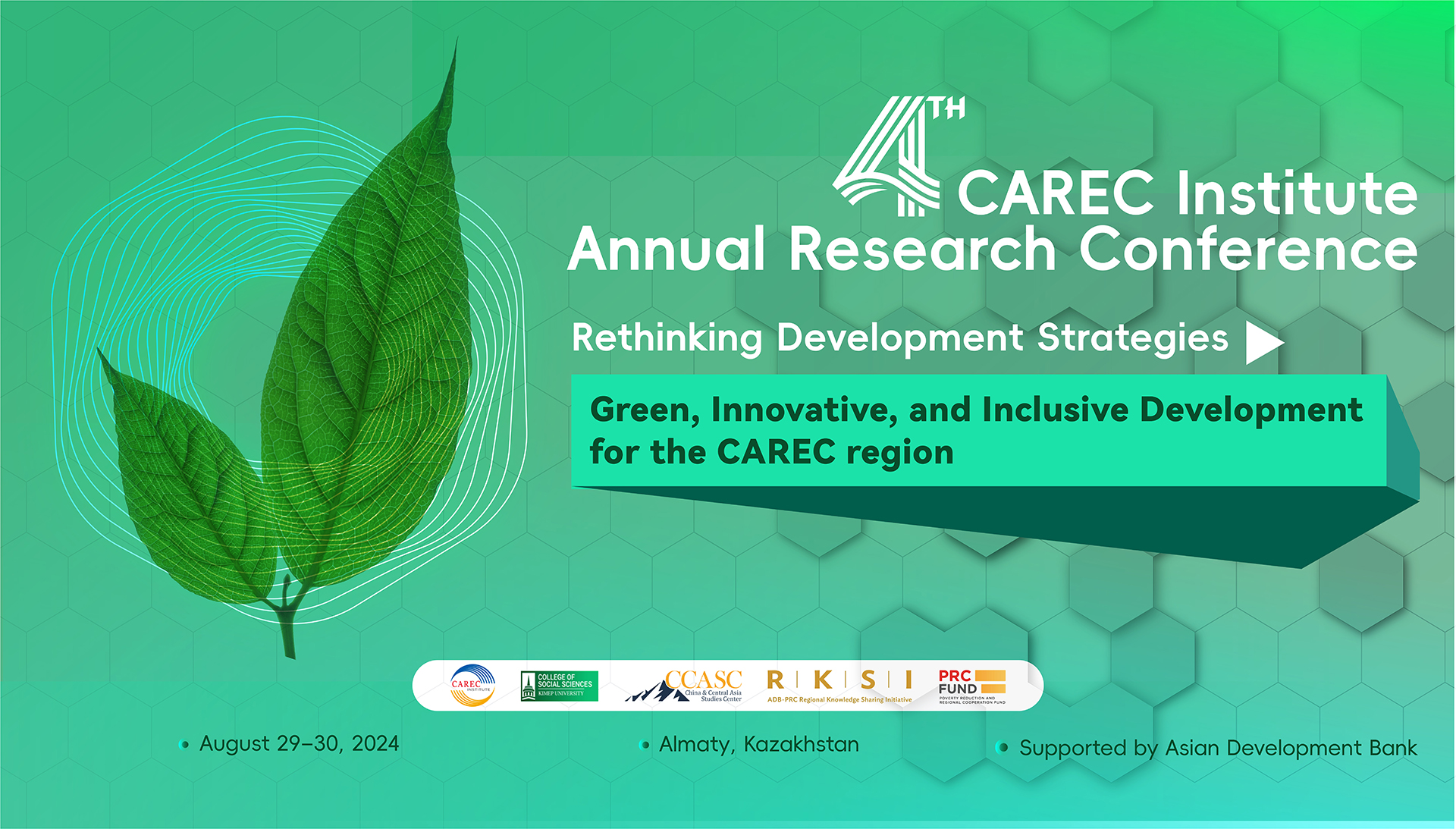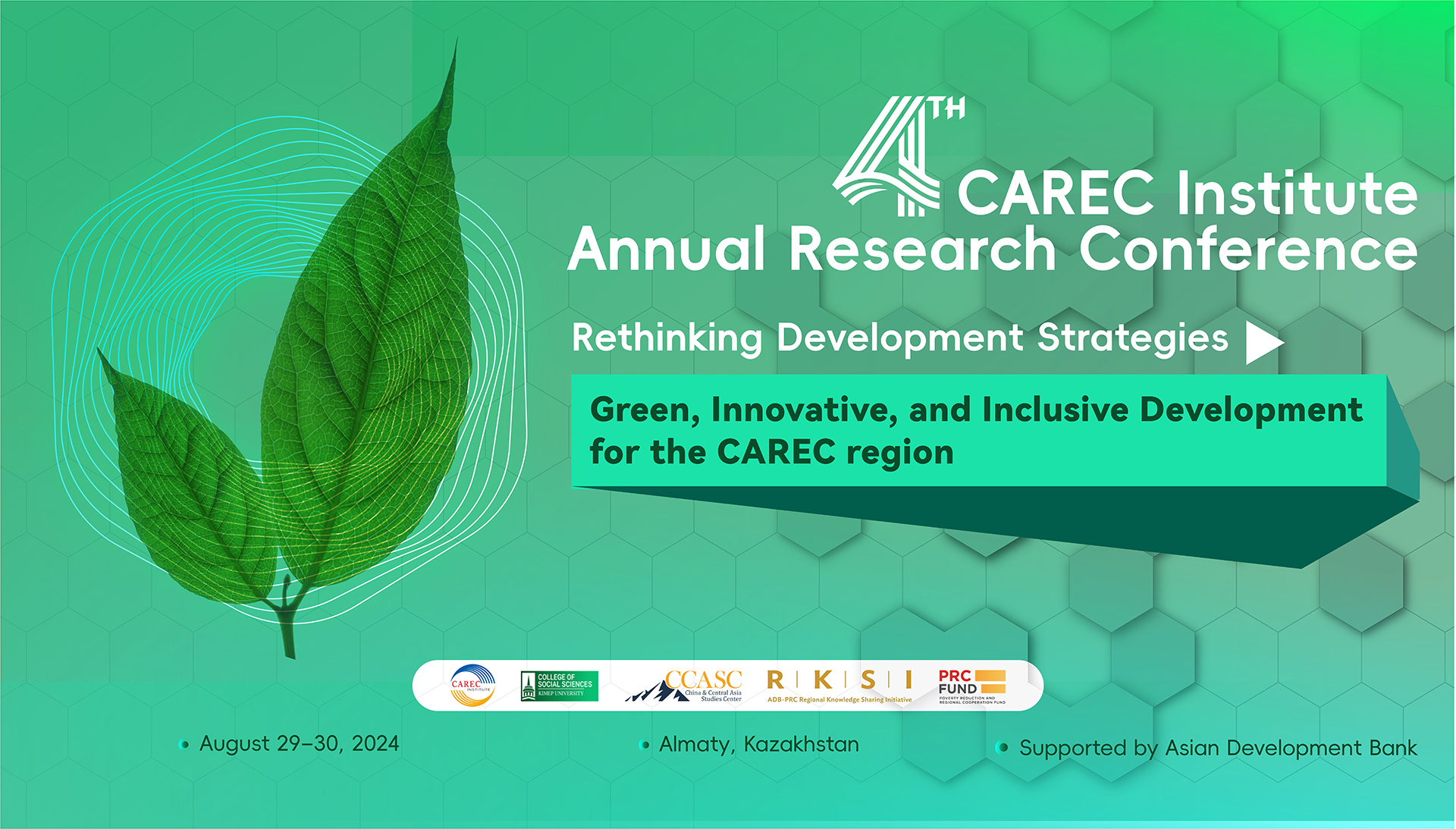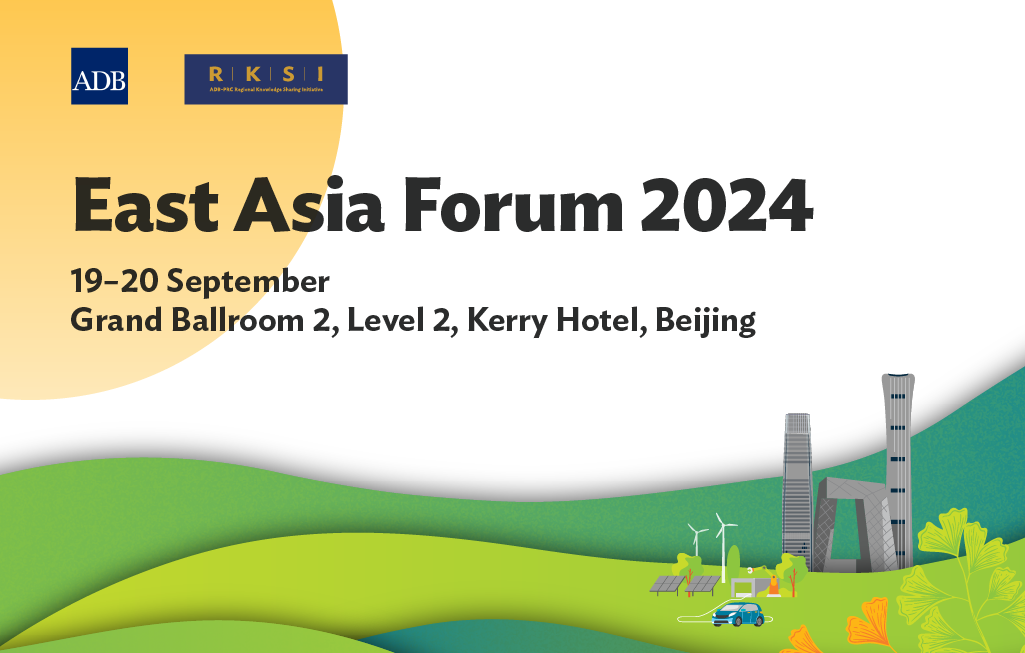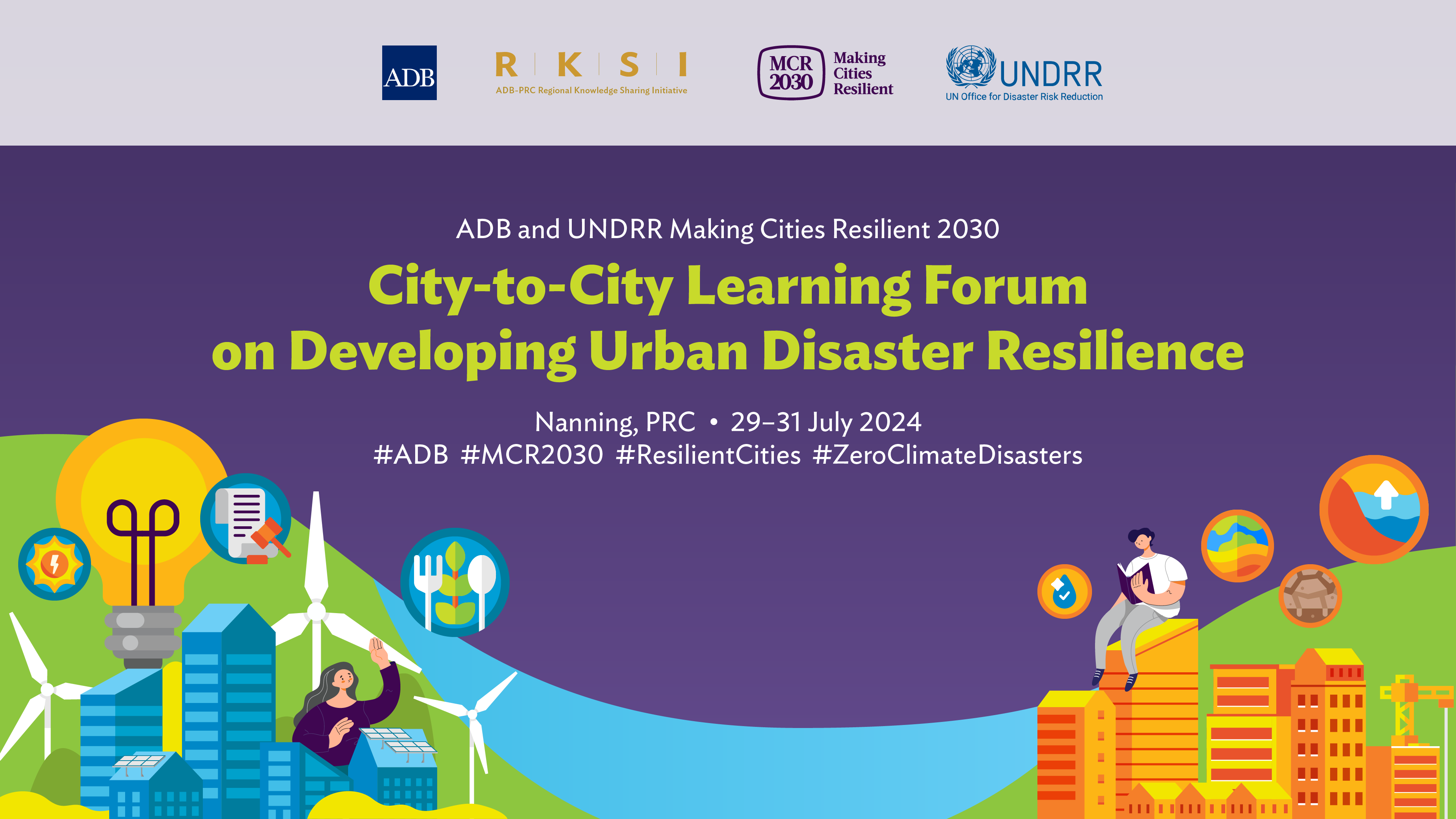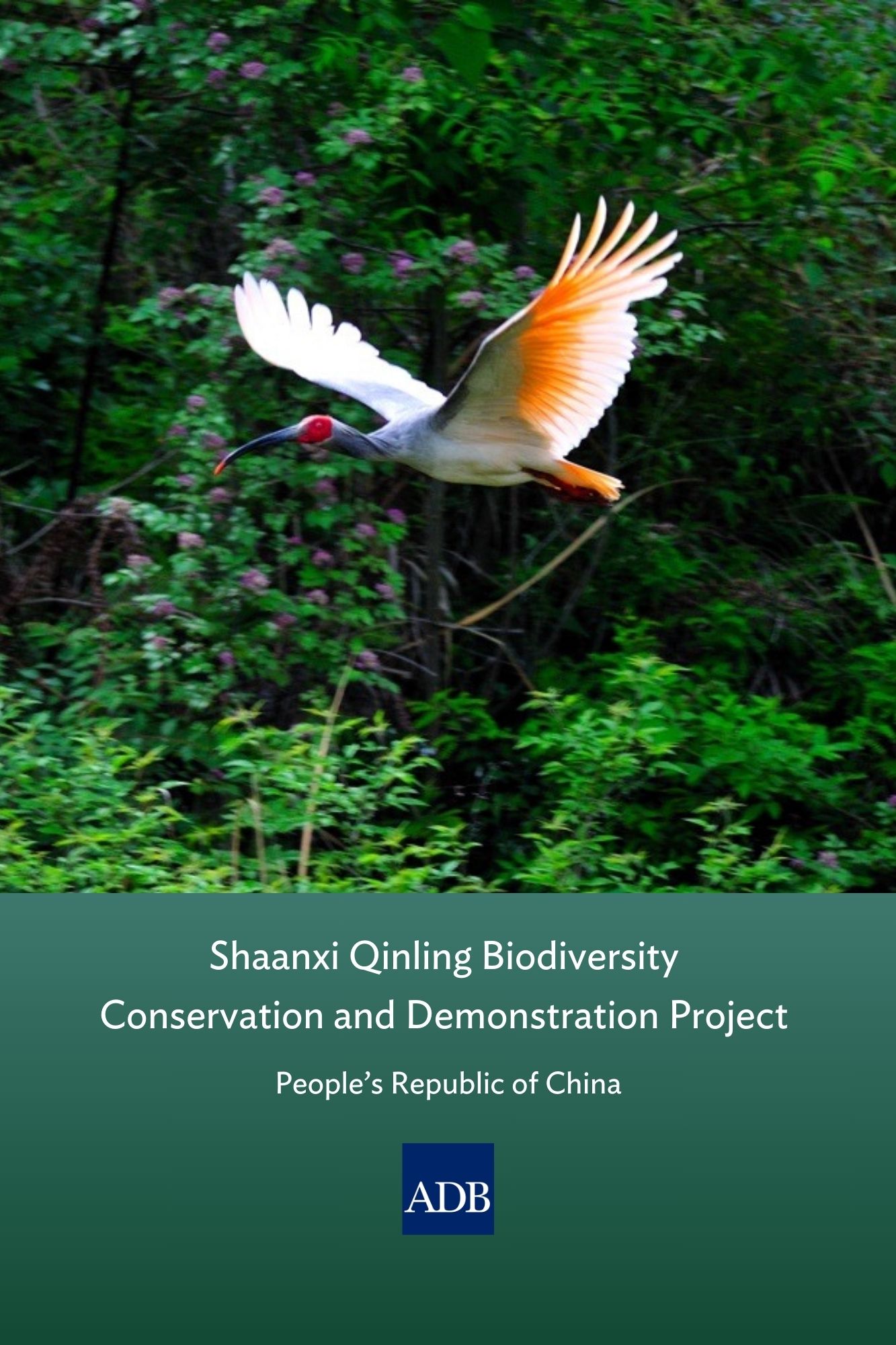| 09:00 – 11:00 | Opening Plenary and Keynote Speech
Chair: Yu Haibo, Governor of Miyun District Government, Beijing Municipality |
| 09:00 – 09:40 | Opening Remarks
- Guo Lanfeng, Vice Chairman, National Development and Reform Commission (NDRC)
- Muhammad Ehsan Khan, Director General, EARD, ADB
- Xia Linmao, Vice Mayor, Beijing People’s Government
|
| Keynote Presentations |
| 09:40 – 10:00 | Advances in Policy and Legislation of Eco-compensation in the PRC
Tong Zhangshun, Director General, Regional Revitalization Department, National Development and Reform Commission (NDRC) |
| 10:00 – 10:20 | China’s Approach and Innovation in Eco-compensation
Wang Jinnan, Honorable Dean, Chinese Academy of Environmental Protection, and Academician of Chinese Academy of Engineering |
| 10:20 – 10:40 | Scaling up natural capital investment in the Asia-Pacific Region
Qingfeng Zhang, Senior Director, Agriculture, Food, Nature and Rural Development Sector Office, Asian Development Bank |
| 10:40 – 11:00 | Coffee/Tea Break |
| 11:00 – 12:00 | Thematic Session 1: Advancement in Eco-compensation and payments for Ecosystem Services
Chair: Sanath Ranawana, Director, Natural Capital and Climate, Agriculture, Food, Nature and Rural Development Sector Office, ADB |
| 11:00 – 11:20 | Natural Capital Accounting for Ecosystem Conservation
Chunquan Zhu, Head, China Nature Initiatives, World Economic Forum |
| 11:30 – 11:45 | Water funds for Watershed Protection |
Daniel Shemie, Director, Resilient Freshwater (Water-fund), TNC |
| 11:45 – 12:00 | Panel Discussion and Questions and Answers
Innovation, Legislation, and Replicability of China’s Eco-Compensation
Moderated by Sanath Ranawana, Director, Natural Capital and Climate, Agriculture, Food, Nature and Rural Development Sector Office, ADB
- Wang Jinnan, Honorable Dean, Chinese Academy of Environmental Protection, and Academician of Chinese Academy of Engineering
- Qingfeng Zhang, Senior Director, Agriculture, Food, Nature and Rural Development Sector Office, Asian Development Bank
- Chunquan Zhu, Head, China Nature Initiatives, World Economic Forum
- Daniel Shemie, Director, Resilient Freshwater (Water-fund), TNC
|
| 12:00 – 13:30 | Lunch Break |
| 13:30 – 15:25 | Thematic Session 2: Market-based Eco-compensation
Chair: Au Shion Yee, Principal Water Resources Specialist, Agriculture, Food, Nature and Rural Development Sector Group, ADB |
| 13:30 – 13:50 | Green transformation with green finance
Ge Xiangqun, Deputy General Manager, Operation Department, China Development Bank |
| 13:50 – 14:10 | Market based nature finance
Zhang Anping, Deputy General Manager, National Green Development Fund |
| 14:10 – 14:25 | AIIB innovation in investment in nature |
Xie Chunping, Climate Economist, Economics Department, Asian Infrastructure Investment Bank |
| 14:25 – 14:40 | Market Instruments to Invest Ecosystem Protection and Restoration
Callum Douglas, Senior Strategy Consultant, Nature and Biodiversity Strategy, Policy and Budget Department |
| 14:40 – 14:55 | Biodiversity credit mechanism assisting high-quality development of nature markets
Chen Yuanzhe, Secretary General, Chinese Institute of Green Carbon |
| 14:55 – 15:25 | Panel Discussion and Questions and Answers
Market-based Eco-Compensation and PES: Viability and Necessity
Moderated by Mingyuan Fan, Principal Water Resources Specialist, Agriculture, Food, Nature and Rural Development Sector Group, ADB,
- Ge Xiangqun, Deputy General Manager, Operation Department, China Development Bank
- Zhang Anping, Deputy General Manager, National Green Development Fund
- Xie Chunping, Climate Economist, Economics Department, Asian Infrastructure Investment Bank
- Callum Douglas, Senior Strategy Consultant, Nature and Biodiversity Strategy, Policy and Budget Department
- Chen Yuanzhe, Secretary General, Chinese Institute of Green Carbon
|
| 15:25 – 15:40 | Coffee/Tea Break |
| 15:40 – 18:00 | Thematic Session 3: Eco-Compensation with Charity Refund
Chair: Song Yuanyuan, Director, Regional Revitalization Department of NDRC |
| 15:40 – 15:55 | Public involvement in eco-compensation
Chen Peng, Secretary General, China Green Foundation |
| 15:55 – 16:10 | Environmental charity foundation development and eco-compensation in China
Liu Chunlong, Secretary General, China Environmental Protection Foundation |
| 16:10 – 16:25 | Environmental foundation financing: international perspectives and implications for China and other DMCs
Ren Wenwei, Director of Water Practice & Head of Shanghai Office, WWF (Switzerland) China |
| 16:25 – 16:35 | Question & Answers |
| 16:35 – 16:55 | Financing Innovations in nature conservation
Zhu Da, Country Director, China Program, The Nature Conservancy |
| 16:55 – 17:15 | The Practice on Civil Protected Areas by The Paradise International Foundation
Wang Dezhi, Chief Scientist, The Paradise International Foundation |
| 17:15 – 18:00 | Panel Discussion and Questions and Answers
Eco-compensation with Charity Fund and Public Participation
Moderated by Song Yuanyuan, Director, Regional Revitalization Department of NDRC
- Chen Peng Secretary General, China Green Foundation
- Liu Chunlong, Secretary General, China Environmental Protection Foundation
- Zhu Da, Country Director, TNC China Program
- Wang Dezhi, Chief Scientist, The Paradise International Foundation
- Ren Wenwei, Director of Water Practice & Head of Shanghai Office, WWF (Switzerland) China
- Shi Jianbin, Senior Project Manager, Paulsen Institute
|
| 18:00 – 20:00 | Dinner |
